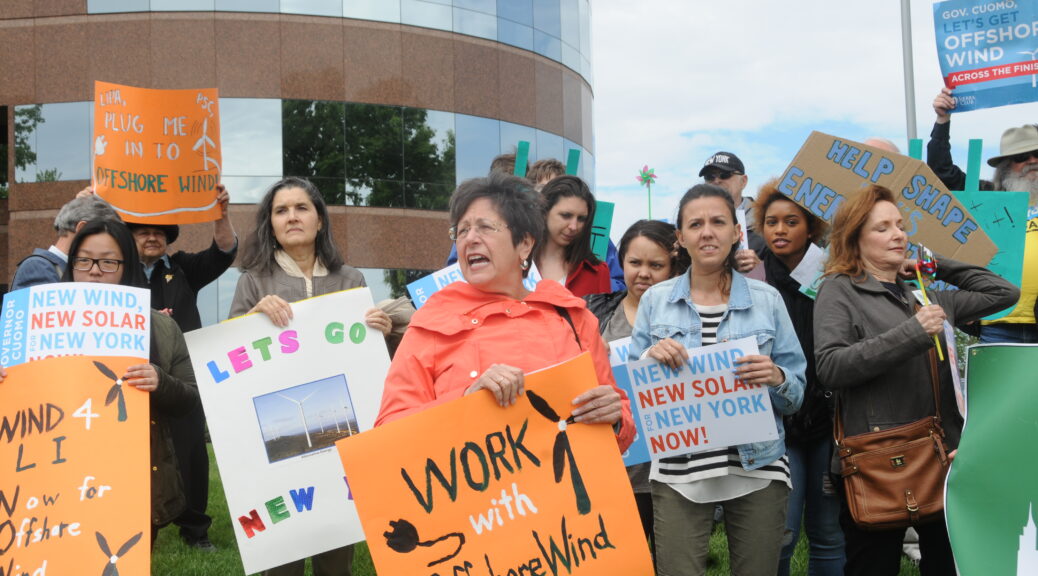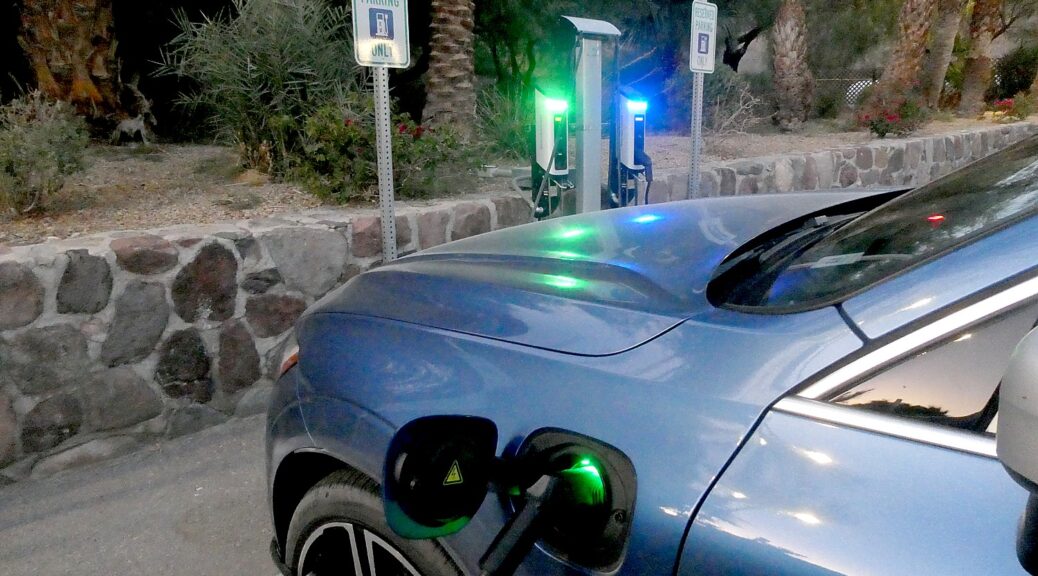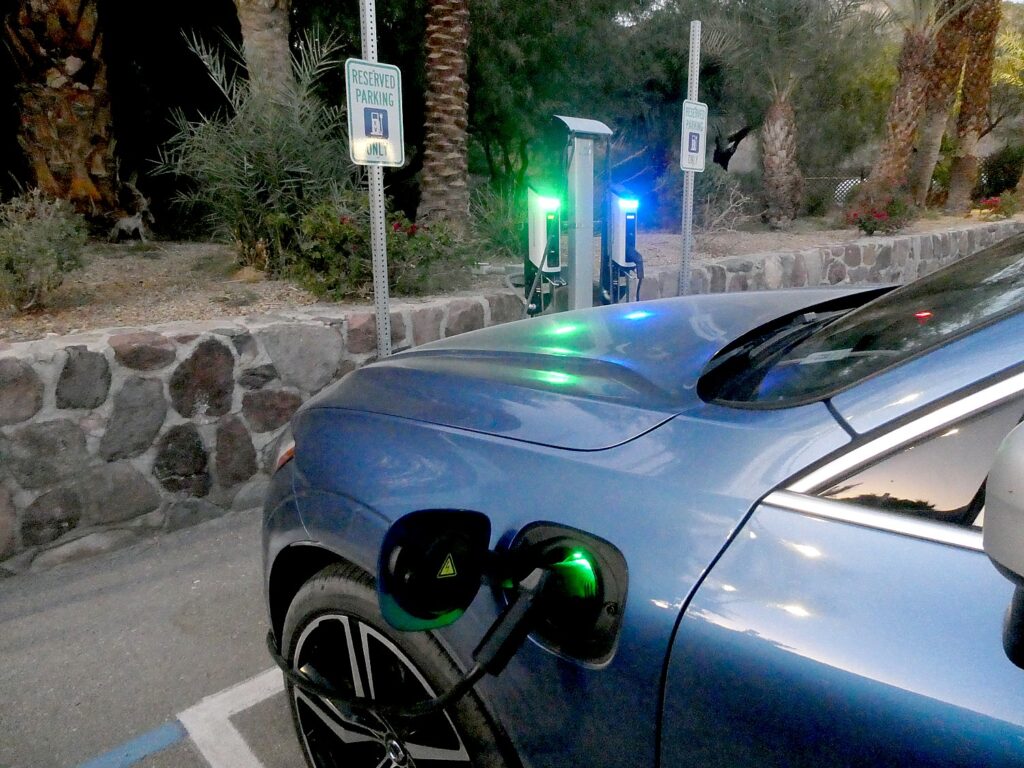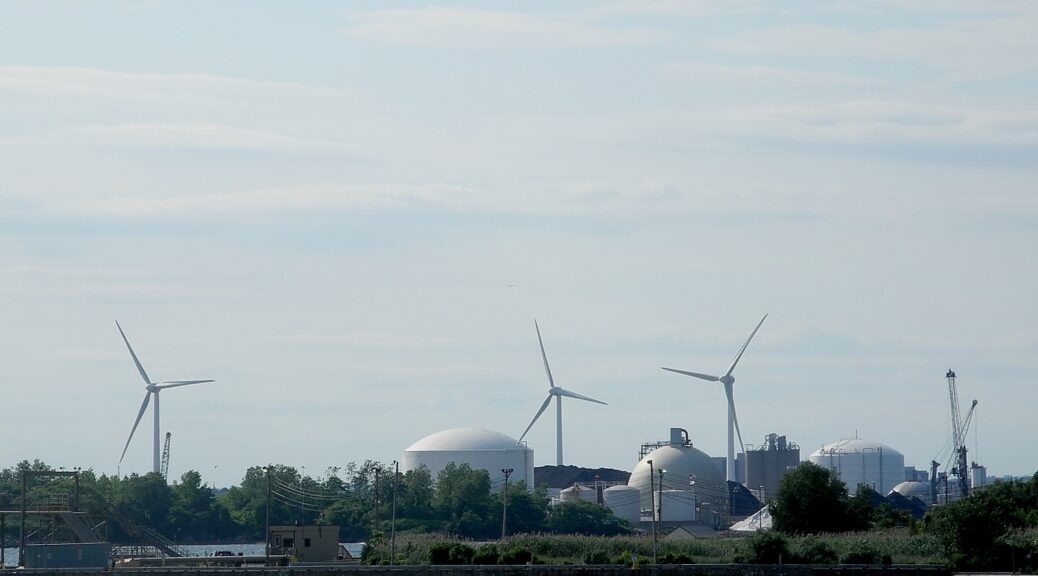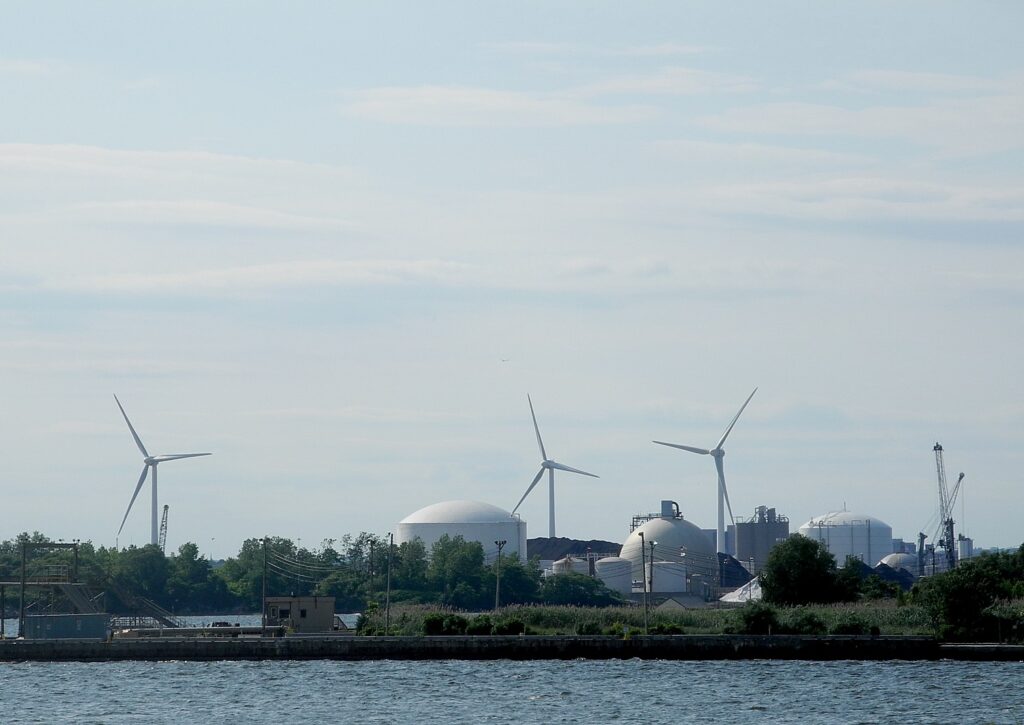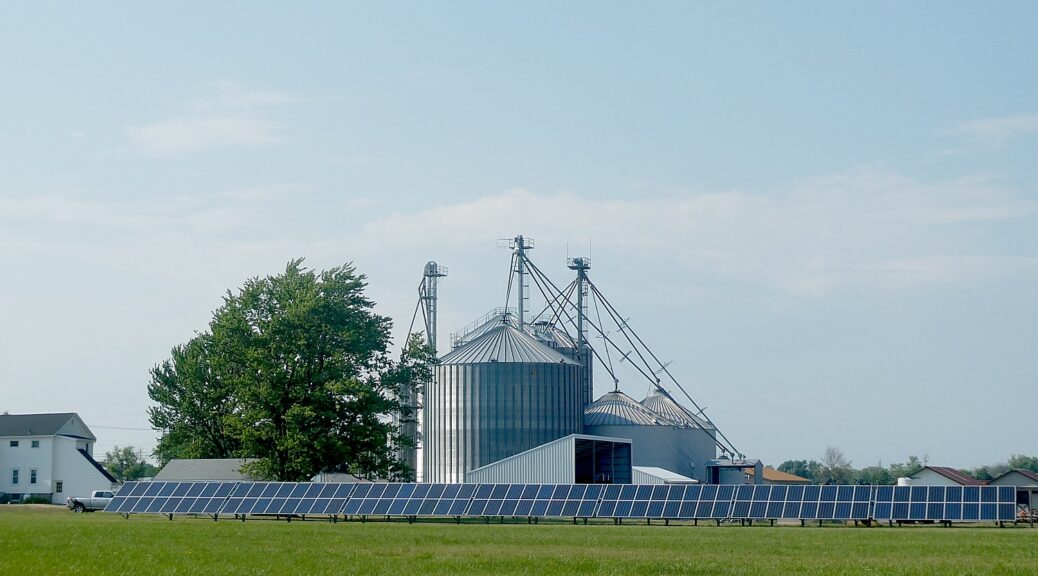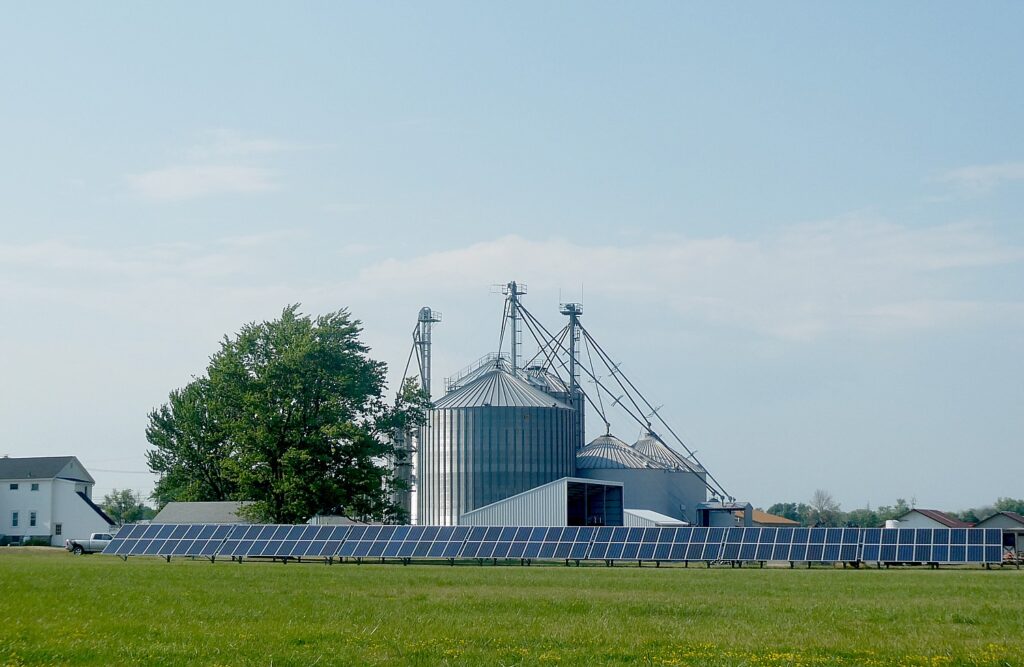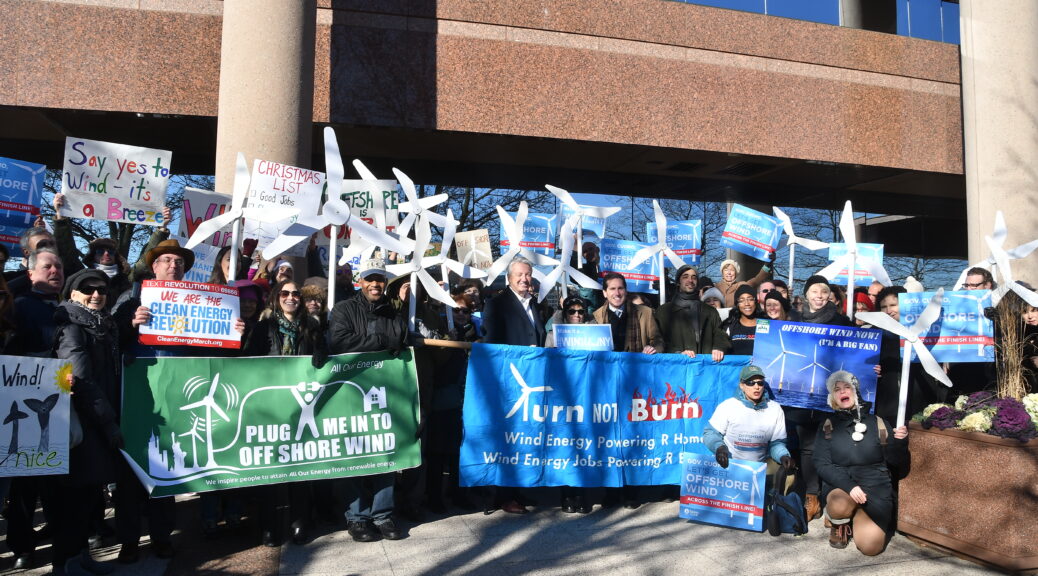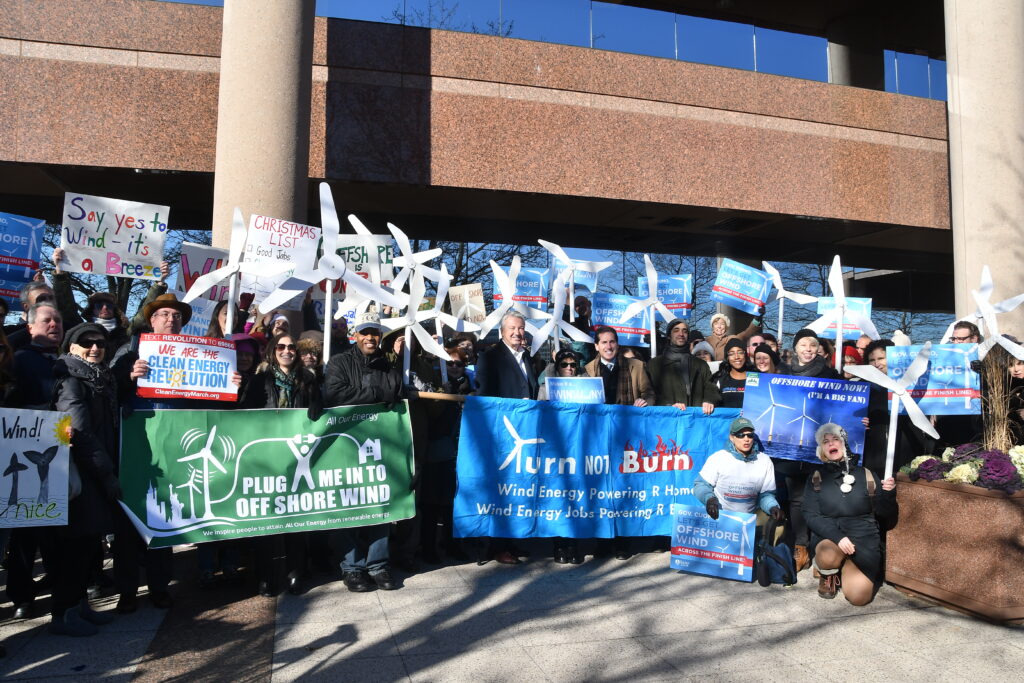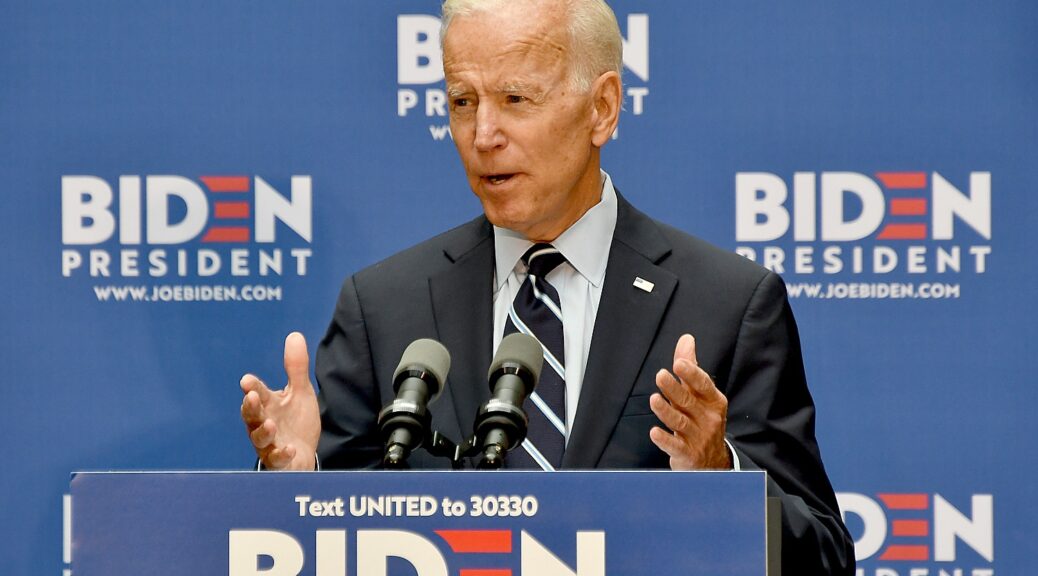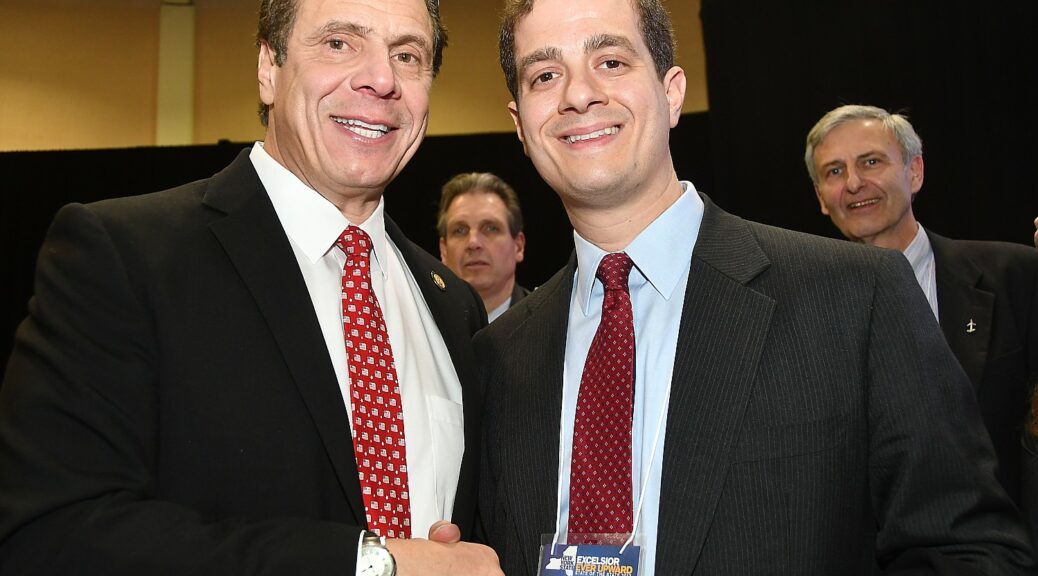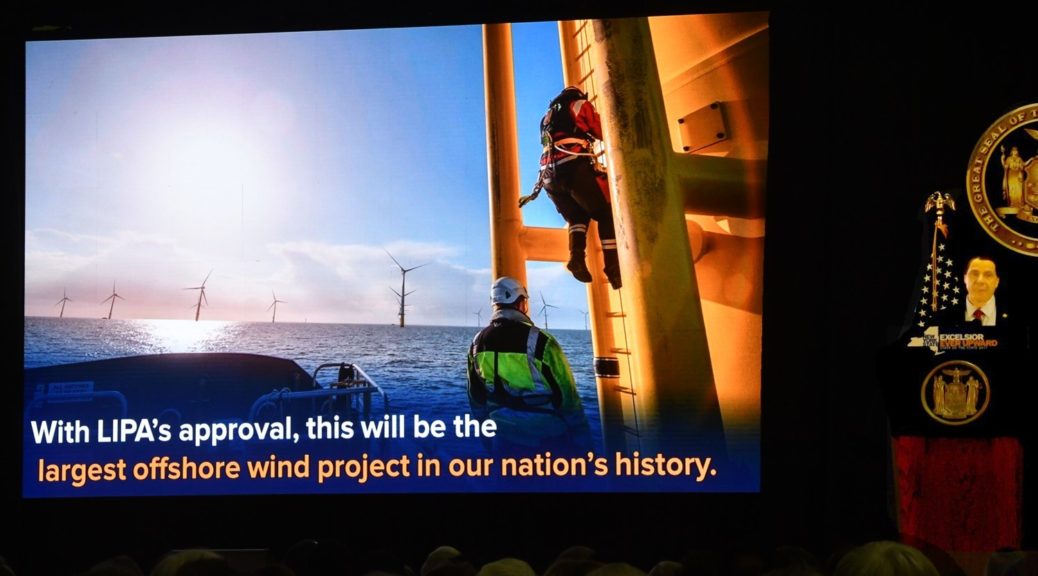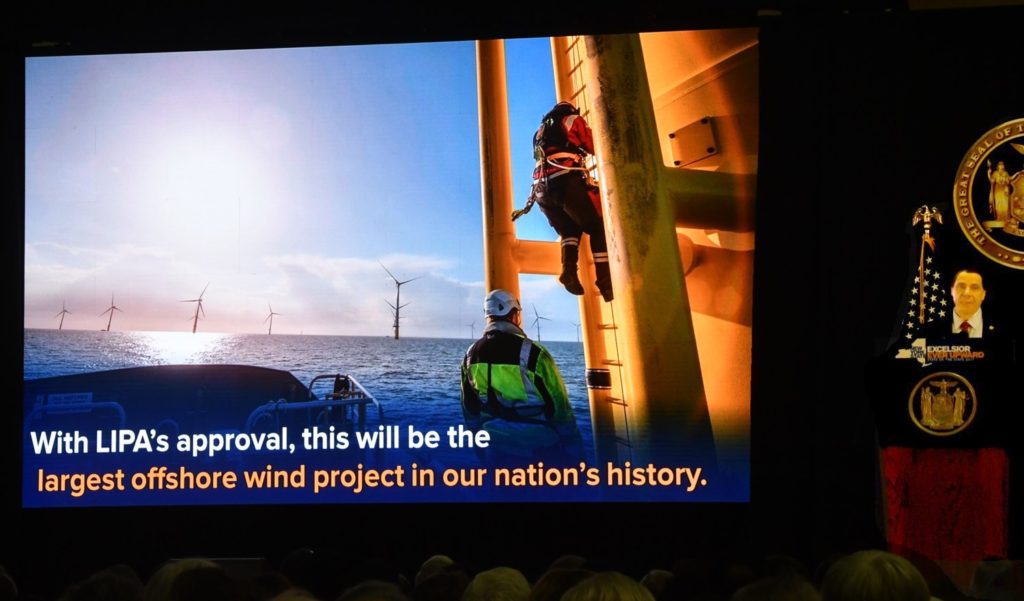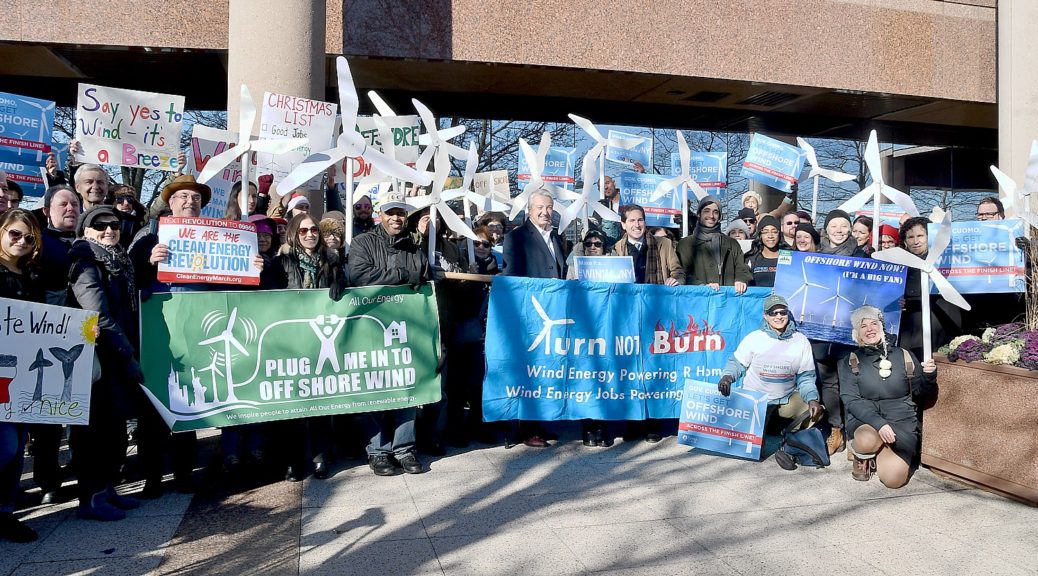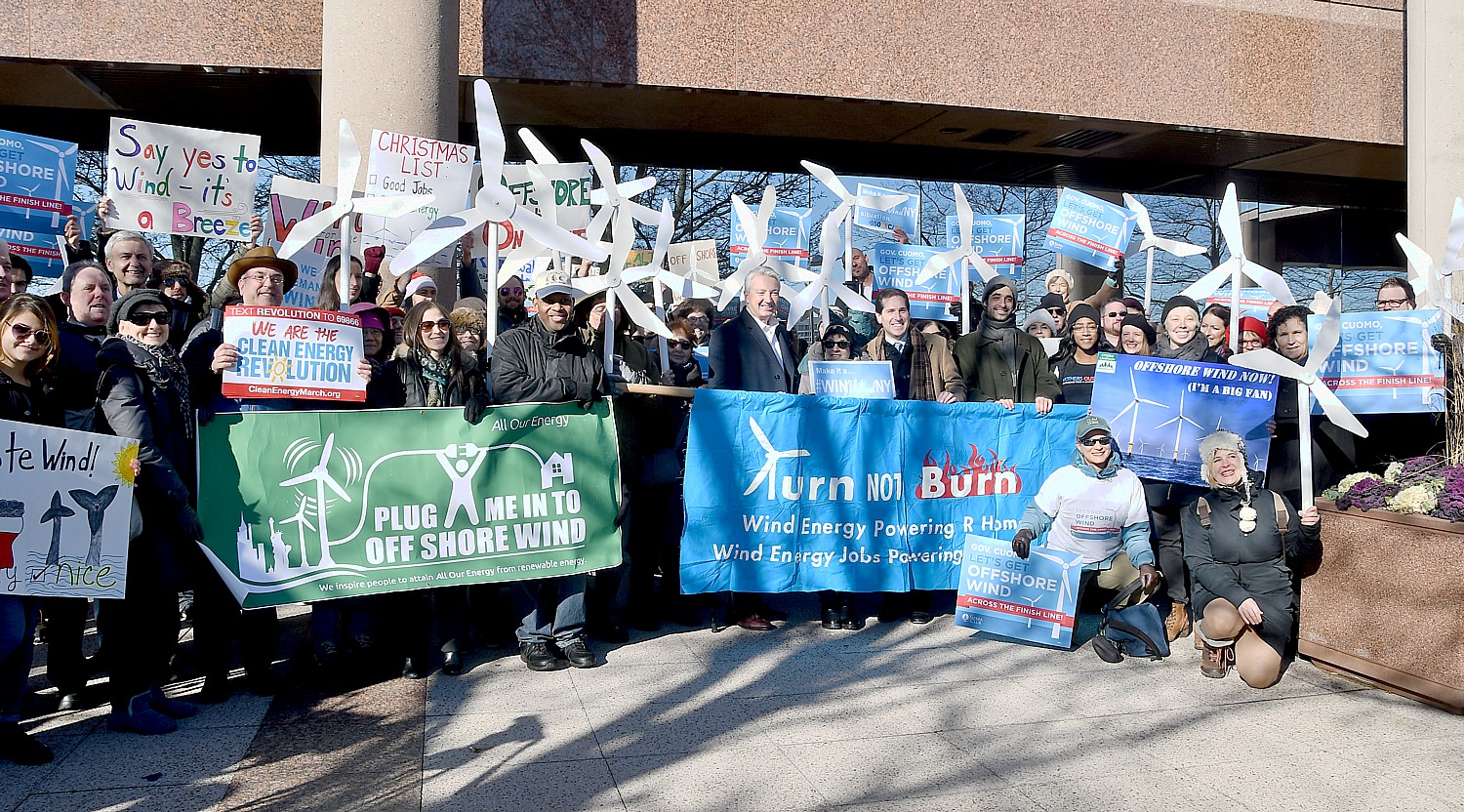New Actions Advance Offshore Wind, Leverage Public Lands for Clean Energy, and Build the Bipartisan Infrastructure Law’s Transmission Lines
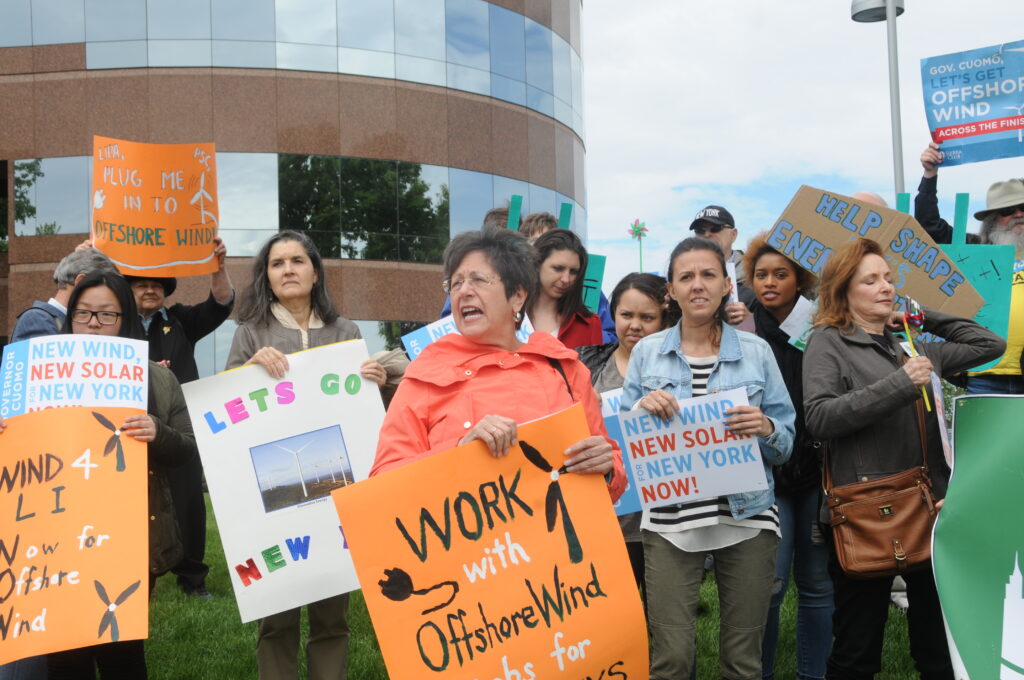
When President Biden came into office nearly a year ago, he pulled every lever to position America to scale up clean energy that creates good-paying, union jobs and lowers energy bills for consumers. Since then, the Biden-Harris Administration has readied offshore areas to harness power from wind, approved new solar projects on public lands, and passed the Bipartisan Infrastructure Law to build thousands of miles of transmission lines that deliver clean energy.
Today, the Biden-Harris Administration is making major leaps forward on wind, solar, transmission, and other clean energy projects to create high-quality jobs and deliver affordable, carbon pollution-free electricity across the country. Seven federal agencies are announcing clean energy projects and plans that demonstrate the Administration’s unwavering commitment to creating cleaner and cheaper energy, and the actions showcase President Biden’s unprecedented coordination activating the entire government to fight climate change, produce good-paying, union jobs, and accelerate America’s clean energy economy.
These actions include:
- The Department of the Interior is holding a record-breaking offshore wind lease sale, with the most lease areas ever offered, in the New York Bight off the coasts of New York and New Jersey. The upcoming lease sale is projected to generate up to 7 gigawatts (GW) of clean energy, power two million homes, and create thousands of jobs in manufacturing, construction, operations, maintenance, and service industries in nearby communities. The sale includes innovative lease provisions that will lead to offshore wind projects being built with union labor and Made in America materials. Working together, New York, New Jersey and the federal government will build on these new lease stipulations through a new federal-state partnership that will ensure local residents—including underserved communities—benefit from new developments.
- A number of agencies are working together to drive the rapid build-up of offshore wind—a brand new U.S. clean energy industry that can create nearly 80,000 good-paying jobs by 2030. For example, the Department of Transportation recently announced port investments to help develop areas that will be used to build and stage offshore wind turbine components, and efforts are underway across the Departments of Commerce, the Interior, and Energy to promote biodiversity and cooperative ocean use and support innovation across the supply chain.
- The Departments of the Interior, Agriculture, Defense, Energy, and the Environmental Protection Agency are forming a new collaboration to improve the efficiency and effectiveness of reviews of clean energy projects on public lands, in order to expand solar, onshore wind, and geothermal energy, building on the Department of the Interior’s approvals over the past year of 18 onshore projects that will deliver 4.175 GW of clean energy.
- The Department of Energy is launching a new Building a Better Grid initiative to accelerate the deployment of new transmission lines—as enabled by the Bipartisan Infrastructure Law—to connect more Americans to cleaner, cheaper energy. This transmission buildout will make our grid more reliable and resilient in the face of intensifying extreme weather and is critical to achieving the President’s goal of 100% carbon pollution-free electricity by 2035.
- To ensure that these benefits reach all Americans, the Department of Agriculture is creating a new pilot program to support clean energy in underserved rural communities and the Department of Commerce is awarding American Rescue Plan funds to support regional coalitions to grow new industry clusters focused on clean energy deployment and job training. And the release of a new report from the National Renewable Energy Laboratory shows that the Administration’s SolarAPP+ tool is reducing permitting times for residential installations to less than one day, helping local governments fast-track rooftop solar.
Today’s announcements build on a year of unprecedented progress on clean energy deployment. Before President Biden took office, projects were stalled and agencies were hollowed out. But during his first week, the President issued an Executive Order on Tackling the Climate Crisis at Home and Abroad, which mobilized the entire federal government to activate and deploy clean energy so that Americans can reap the immense climate and economic benefits of the clean energy future.
The Administration continues to use every tool available to deploy clean energy at a record pace. But to fully seize the opportunities of a clean energy economy, President Biden is pressing forward on passing the Build Back Better Act. The historic legislation will amount to the nation’s largest investment in combatting climate change, lowering energy costs for working families, and building a clean energy future. It will support domestic manufacturing of wind turbines, solar panels, and other clean technologies; invest in workforce development programs to launch careers in these growing industries; and provide a historic set of clean energy tax credits that are more powerful and accessible. With these investments, the U.S. will lead the world on innovative climate solutions and save the average American family hundreds of dollars each year in energy costs.
As work continues to pass the Build Back Better Act, today’s announcements further the Administration’s ongoing commitment to powering our economy with clean American energy:
ADVANCING OFFSHORE WIND TO CREATE JOBS
To deploy offshore wind at the speed and scale necessary to achieve our climate goals and create tens of thousands of jobs, the Administration is announcing:
- Record-Breaking Lease Sale in the New York Bight. Last year, the Administration established a Wind Energy Area in the New York Bight off the coasts of New York and New Jersey. Today, the Department of the Interior’s Bureau of Ocean Energy Management (BOEM) is announcing the Final Sale Notice of six commercial lease areas—the most ever offered—with the potential to generate 5.6 to 7 GW of clean energy across 488,201 acres. Innovative leasing provisions will encourage winning bidders to enter into Project Labor Agreements (PLA) that support union jobs. They also will financially incentivize lessees to utilize wind turbine blades, towers, and cables made in America. To promote meaningful stakeholder engagement, lessees must identify any Tribes, ocean users, underserved communities, and others potentially affected by projects and report on engagement activities.
- New State-Federal Partnership. Today, Interior Secretary Deb Haaland joined New York Governor Kathy Hochul and New Jersey Governor Phil Murphy to celebrate progress in the New York Bight and announce a new collaboration between BOEM, New York, and New Jersey on offshore wind with a focus on job creation and environmental justice. Through a new shared vision and working group, these partners will work together on strengthening regional supply chains and delivering benefits to underserved communities.
- DOT Port Investments for Manufacturing and Staging Hubs. The Department of Transportation (DOT) recently awarded Port Infrastructure Development Program Grants to two hubs that will strengthen the U.S. offshore wind supply chain. In Virginia, the Portsmouth Marine Terminal will receive $20 million to construct staging and storage areas for wind turbine components—supporting union jobs for dockworkers, crane operators, and building trades members. In New York, the Port of Albany will receive $29.5 million for the Offshore Wind Tower Manufacturing Port Project, which will develop vacant areas along the Hudson River for a first-of-its-kind U.S. facility for fabrication and assembly of offshore wind towers, creating hundreds of jobs in construction, manufacturing, and maritime activities. DOT announced in March 2021 that this discretionary port funding would be available to support offshore wind activities, and that climate and environmental justice considerations would factor into the review process. The Bipartisan Infrastructure Law significantly increases funding for the Port Infrastructure Development Program Grants to expand federal investments in ports.
- Funding for Innovative Supply Chain and Maintenance Projects. The National Offshore Wind Research and Development Consortium is awarding over $3 million to six offshore wind R&D projects, bringing total investment through NOWRDC over the past year to $14 million. The competitive awards will fund three new supply chain projects to facilitate U.S. manufacturing, ensure quality component production, and simplify transportation of major wind plant components. Three additional projects will support asset monitoring and inspection to reduce operational costs for offshore wind farms. The NOWRDC was established in 2018 with a $20.5 million Department of Energy (DOE) investment and matching funds from the New York State Energy Research and Development Authority (NYSERDA), with follow-on contributions from state agencies in Maryland, Virginia, Massachusetts, Maine, and New Jersey—all resulting in approximately $48 million in committed funds.
- NOAA-BOEM Memorandum of Understanding. The Commerce Department’s National Oceanic and Atmospheric Administration (NOAA) and BOEM are entering an interagency agreement to collaboratively advance offshore wind energy while protecting biodiversity and promoting cooperative ocean use. This partnership underscores NOAA and BOEM’s commitment to leverage their resources and expertise to responsibly deploy 30 GW by 2030 in a way that protects environmental quality, creates jobs, and advances environmental justice.
- DOE Report Underscoring Need for Continued Offshore Wind Investment. The Department of Energy will be issuing a report on “Offshore Wind Energy Strategies: Regional and National Strategies to Maximize the Effectiveness, Reliability, and Sustainability of U.S. Offshore Wind Energy Development and Operation.” It outlines five strategic priorities for tapping into the enormous potential for growth and job creation in the offshore wind industry: expanding targeted federal incentives, reducing costs through innovation, improving siting and permitting processes, investing in supply chain development, and facilitating grid integration of offshore wind projects. The President’s Build Back Better Act would advance these priorities with expanded investment and production tax credits for offshore wind deployment, advanced manufacturing credits to incentivize Made in America wind turbine components, and investments across transmission planning, port infrastructure, and improved leasing and permitting processes.
These actions follow a year of interagency collaboration to jumpstart the U.S. offshore wind industry—in 2021, the Administration:
- Launched an offshore wind strategy to achieve a new national target of deploying 30 GW by 2030 and create jobs up and down the supply chain, from factories in the heartland to shipyards on the coasts.
- Approved the nation’s first two commercial-scale offshore wind projects, Vineyard Wind 1 and South Fork Wind, which will be built by a highly skilled, well-paid union workforce.
- Developed a roadmap for holding seven offshore wind lease sales and completing reviews of 16 multi-billion dollar offshore wind projects—representing 22 GW of clean energy—by 2025.
Moving ahead in 2022, BOEM will conduct reviews of wind energy areas offshore northern California (Humboldt) and central California (Morro Bay); explore new potential Wind Energy Areas in the Gulf of Mexico and off the coasts of Oregon and the central Atlantic; and advance lease sales in the Carolina Long Bay and offshore California.
FAST-TRACKING CLEAN ENERGY ONSHORE
America’s public lands have substantial potential to support solar, wind, and geothermal energy projects. As part of ongoing efforts to advance these projects in an environmentally sound way and in close collaboration with community stakeholders, the Administration is announcing:
- Five-Agency Collaboration to Expedite Reviews. The Departments of the Interior, Agriculture, Defense, Energy, and the Environmental Protection Agency have issued a new Memorandum of Understanding to improve federal agency coordination and prioritize reviews for renewable energy projects located on public lands managed by the Interior and Agriculture Departments. This collaboration will expedite decision-making by establishing interagency coordination teams with qualified staff to facilitate environmental reviews and other federal reviews.
- Renewable Energy Coordination Offices. The Department of the Interior is developing plans for new Renewable Energy Coordination Offices (RECOs), authorized by the Energy Act of 2020. The RECOs will realign Bureau of Land Management resources to consolidate renewable energy work, and support collaboration on public lands renewable energy project permitting across Interior and other federal agencies.
- Major Progress toward 25 GW by 2025. Since President Biden took office, the Administration has approved 18 onshore projects totaling 4.175 GW (including eight located on public lands and ten with interconnection lines on public lands) and initiated processing of another 54 priority projects with the potential to add at least 27.5 GW of clean energy. Most recently, the Bureau of Land Management approved the Arica and Victory Pass solar projects in California, which will provide up to 465 megawatts of electricity with up to 400 megawatts of battery storage. With today’s actions, the Administration will continue advancing toward the goal of permitting 25 GW of solar, onshore wind, and geothermal energy on public lands by 2025.
BUILDING CLEAN TRANSMISSION LINES
The President’s Bipartisan Infrastructure Law is the largest-ever investment in America’s power grid, including funding to build out thousands of miles of new transmission lines that are critical to unlocking clean energy resources and providing American homes, schools, and businesses with electricity that is more affordable and reliable in the face of extreme weather, wildfires, and other disasters.
To harness the new funding in the Bipartisan Infrastructure Law, today the Department of Energy is announcing a coordinated transmission deployment program, which will catalyze nationwide buildout of long-distance, high-voltage transmission lines. As outlined in a new Notice of Intent, the pillars of the “Building a Better Grid” initiative are:
- Financing transmission lines and other grid upgrades, including through the Bipartisan Infrastructure Law’s new $2.5 billion Transmission Facilitation Program, a revolving fund for new, replacement, or upgraded transmission lines; $3 billion expansion of the Smart Grid Investment Grant Program, focused on advanced technologies that increase capacity and enhance flexibility of the existing grid; and more than $10 billion in grants for states, Tribes, and utilities to enhance grid resilience and prevent power outages. DOE will also leverage existing financing, including the $3.25 billion Western Area Power Administration (WAPA) Transmission Infrastructure Program, which facilitates deployment of renewable energy in WAPA’s 15-state service territory, and a number of loan guarantee programs through the Loan Programs Office.
- Strengthening coordination with state and local governments, Tribal nations, and other stakeholders, including through participation in regional convenings with independent system operators (ISOs), regional transmission organizations (RTOs), state regulatory commissions, utilities, and others.
- Modernizing transmission planning to drive investment to the highest-need projects, including through a new National Transmission Planning Study, National Transmission Needs Study, Offshore Wind Transmission Study, and expanded technical assistance to help states and regions with policy implementation.
- Improving permitting processes, in coordination with the Infrastructure Implementation Task Force and other federal initiatives, including by helping developers provide early information to permitting agencies; using public-private partnerships to advance new transmission lines and system upgrades; and designating National Corridors in areas with transmission capacity constraints that harm consumers.
- Supporting research, development, and demonstration (RD&D) of next-generation transmission technology, including through collaborations with the National Laboratories and industry partners.
Last year, the Administration laid the foundation for these efforts by revitalizing Department of Energy transmission financing assistance programs and through Department of Transportation actions to help states host transmission lines along public highways and other transportation rights-of-way.
DELIVERING BENEFITS TO COMMUNITIES ACROSS THE COUNTRY
The Administration has prioritized clean energy deployment in rural communities, providing financing for agricultural producers and rural small businesses to install solar arrays and other clean energy infrastructure and for grid upgrades across rural areas. To build on these investments, the Department of Agriculture is creating a new Rural Energy Pilot Program with $10 million in available grants for rural communities that are particularly underserved to deploy community-scale clean energy technologies, innovations, and solutions. This upcoming pilot program will also help economically distressed rural communities conduct community energy planning to advance local goals for clean, affordable, and reliable power.
Additionally, President Biden’s American Rescue Plan is driving historic economic recovery from the pandemic—including by helping communities create new jobs and industries in clean energy. The Department of Commerce’s Economic Development Administration (EDA) recently announced the finalists for Phase 1 of the Build Back Better Regional Challenge, which uses American Rescue Plan funds to support regional industry clusters that will promote equitable economic growth and workforce development. The finalists include 14 regional coalitions focused on clean energy and other climate-related industries, which will receive a combined $7 million in planning grants and compete to win awards of $25 million to $100 million for implementation. Among these finalists are projects to reuse abandoned mine lands for solar, wind, and geothermal energy generation; utilize offshore wind as a power source for hydrogen production in industrial areas; and support clean energy job training, entrepreneurship, and innovation in areas historically dependent on fossil fuel economies.
The Administration is also helping local governments speed up approvals for rooftop solar in order to unlock economic and health benefits for their communities. In July 2021, the Department of Energy launched the Solar Automated Permit Processing (SolarAPP+) tool, an online platform that enables jurisdictions to rapidly approve residential solar installation permits. Now, a new report from the National Renewable Energy Laboratory shows that in a pilot conducted in Arizona and California, the SolarAPP+ tool reduced the average permit review time to less than one day. More than 125 localities have already signed up to consider using SolarAPP+, and the Department of Energy is continuing to recruit additional communities across the country.

